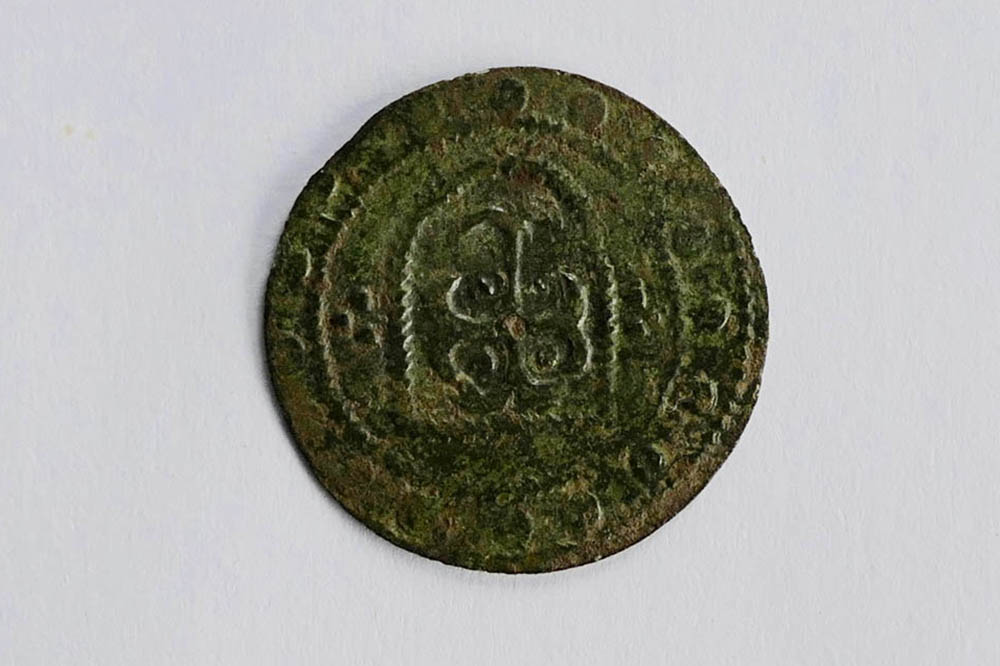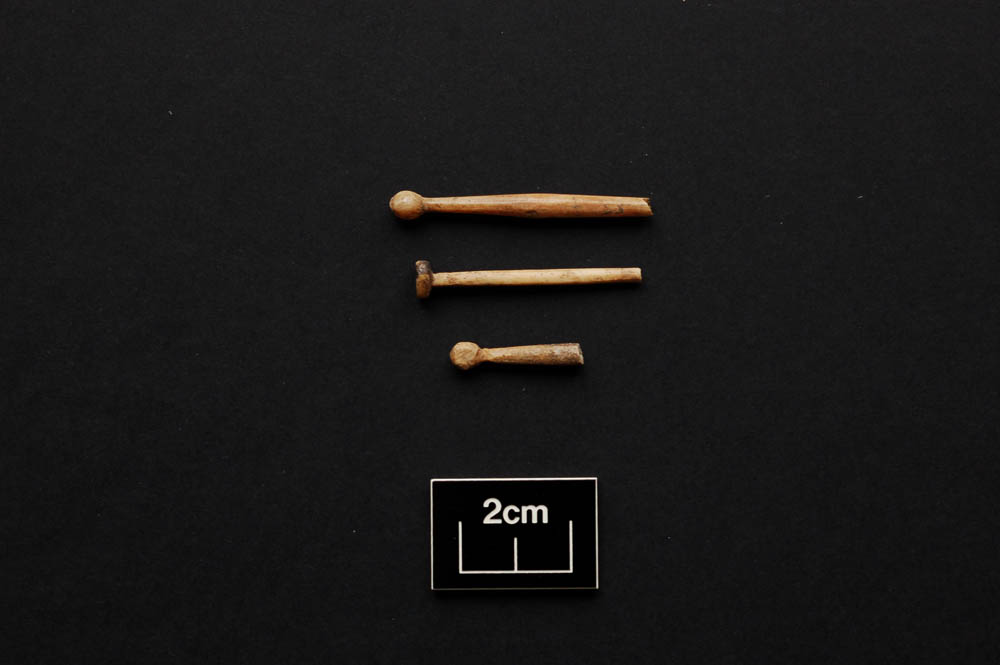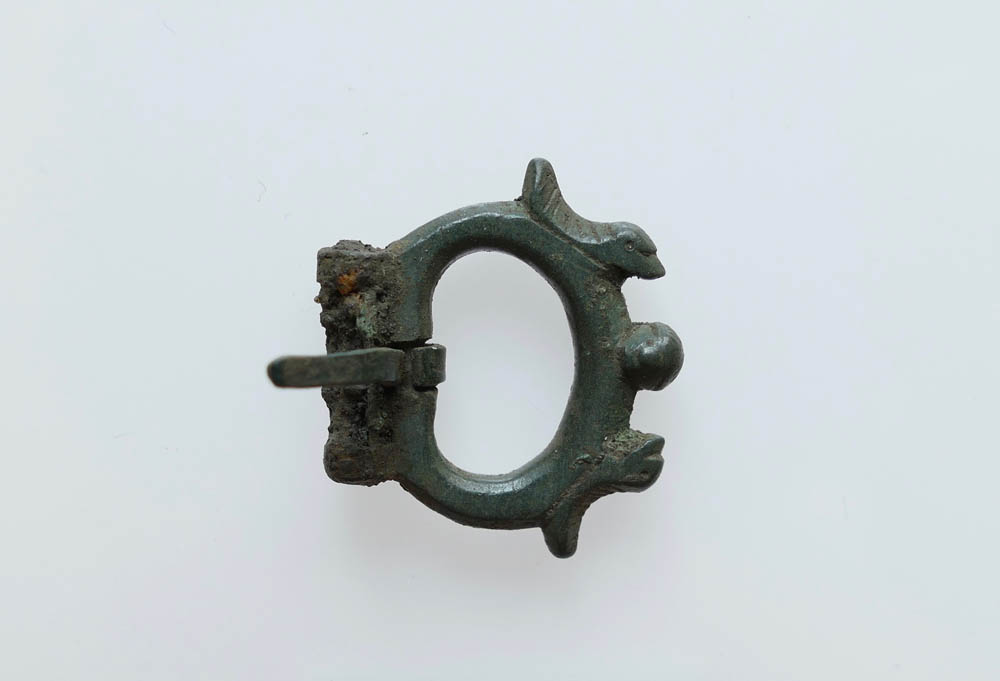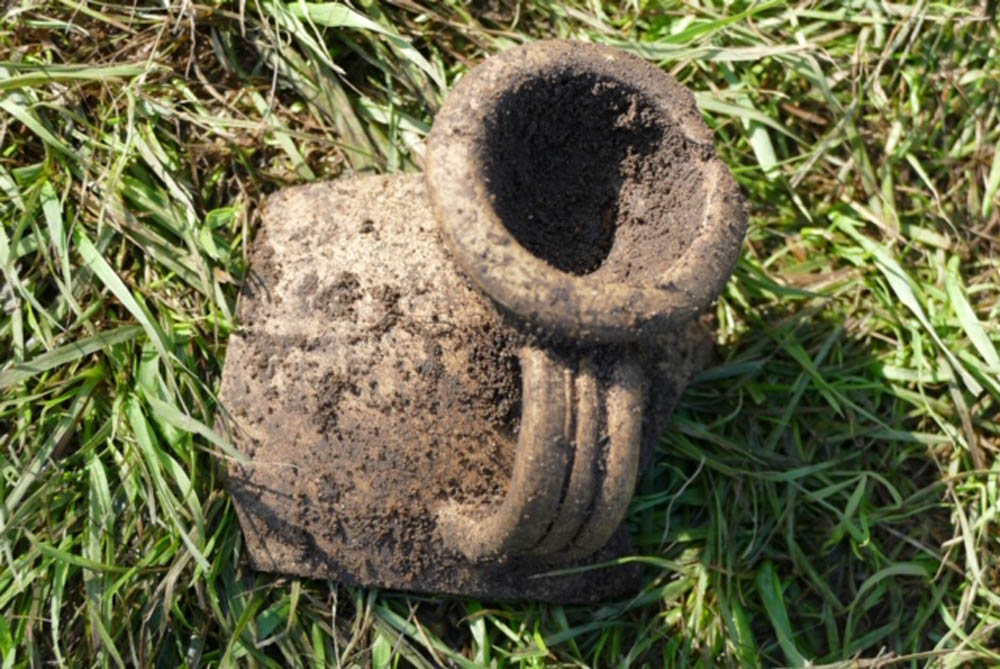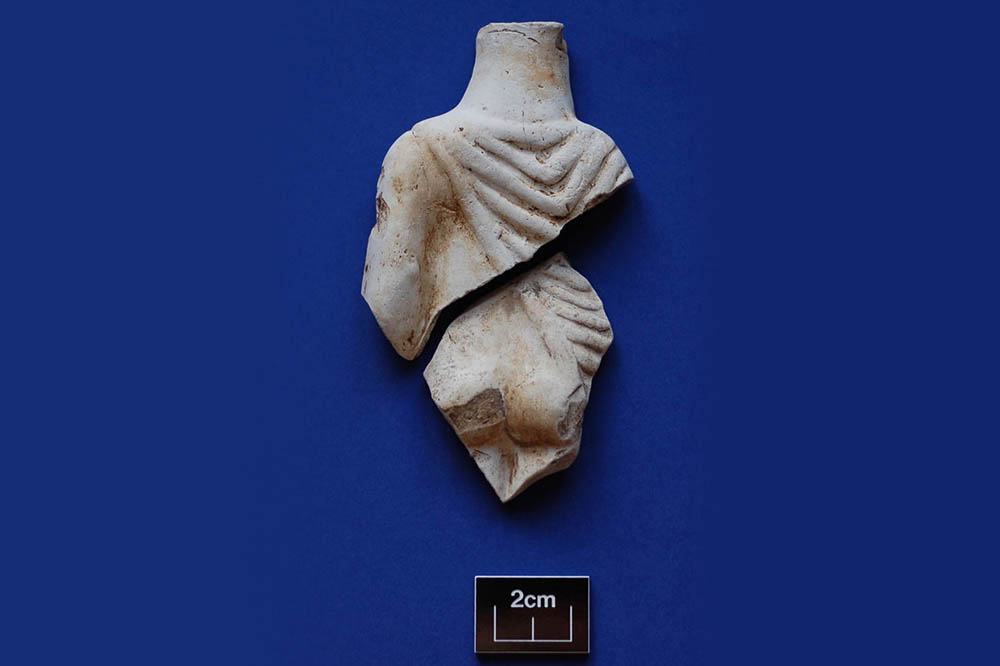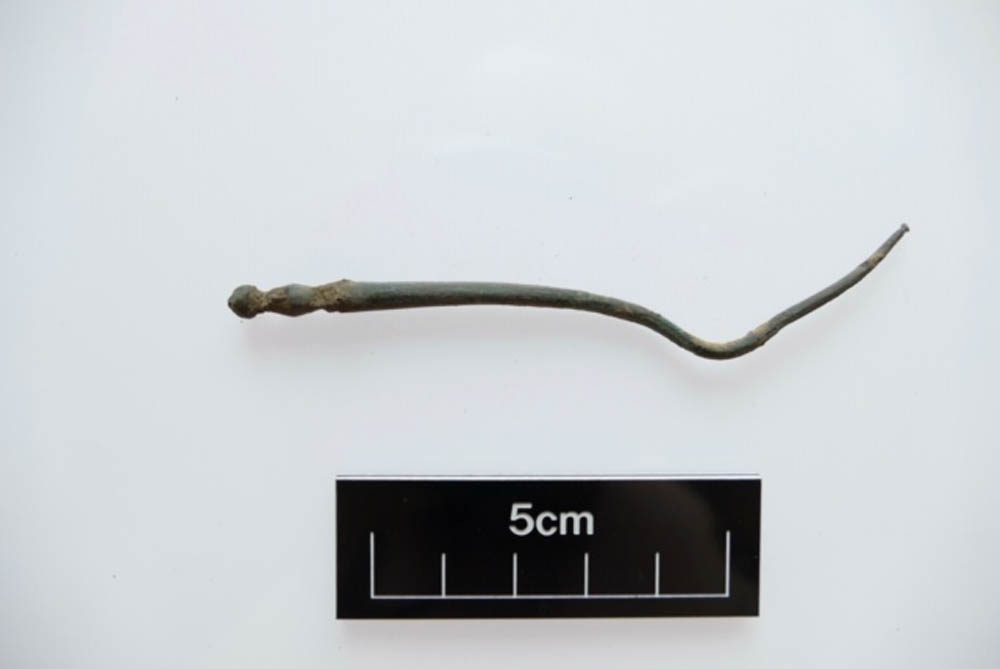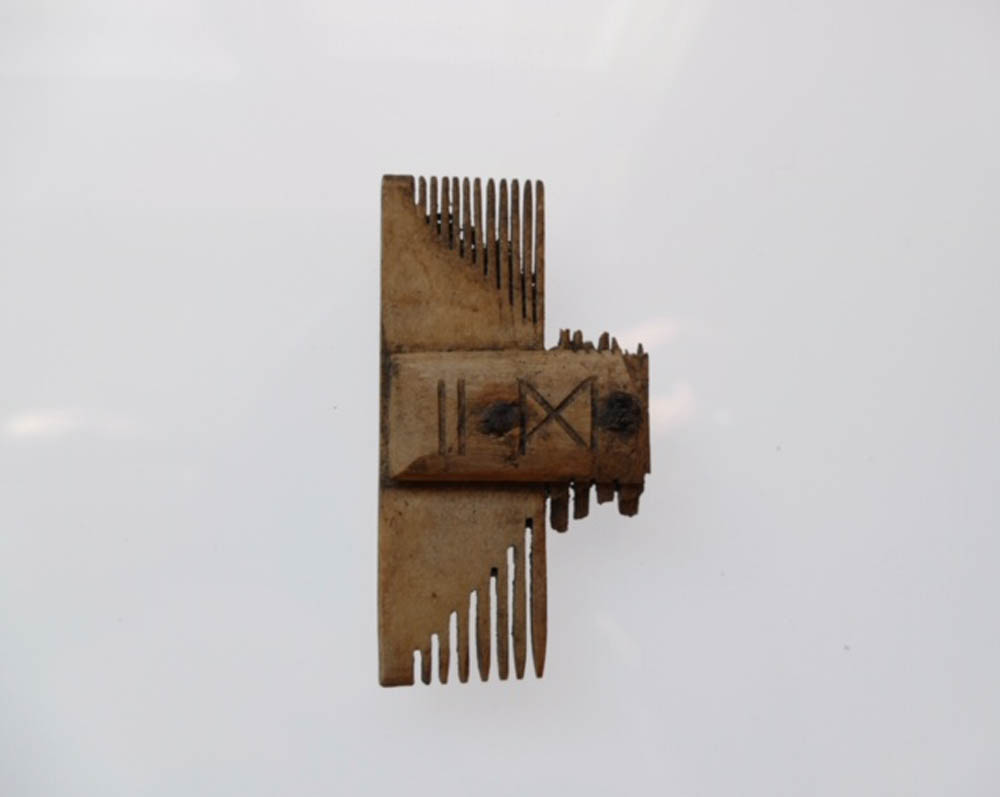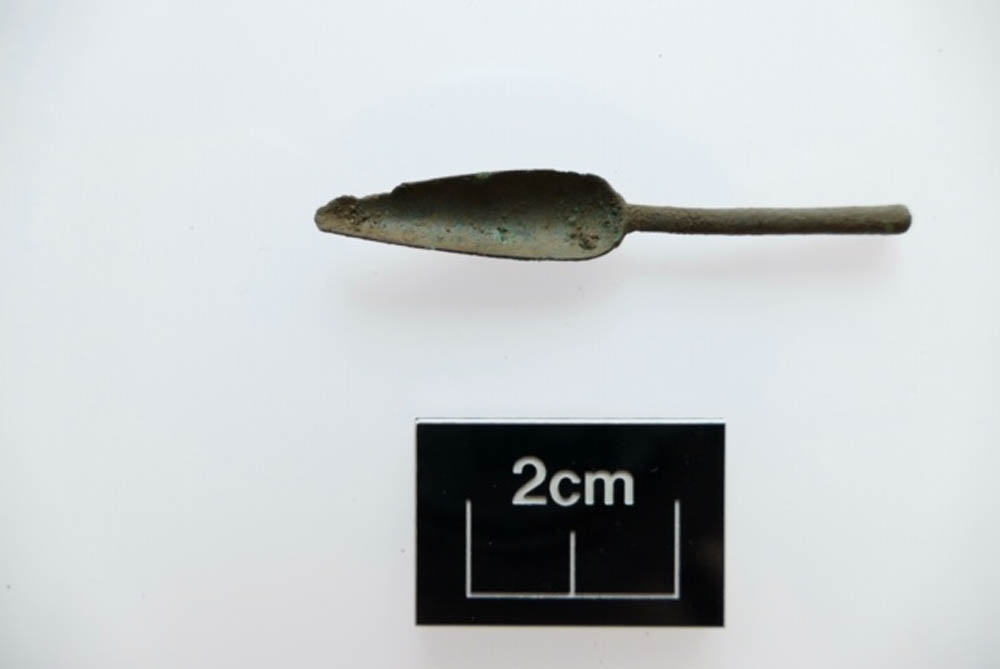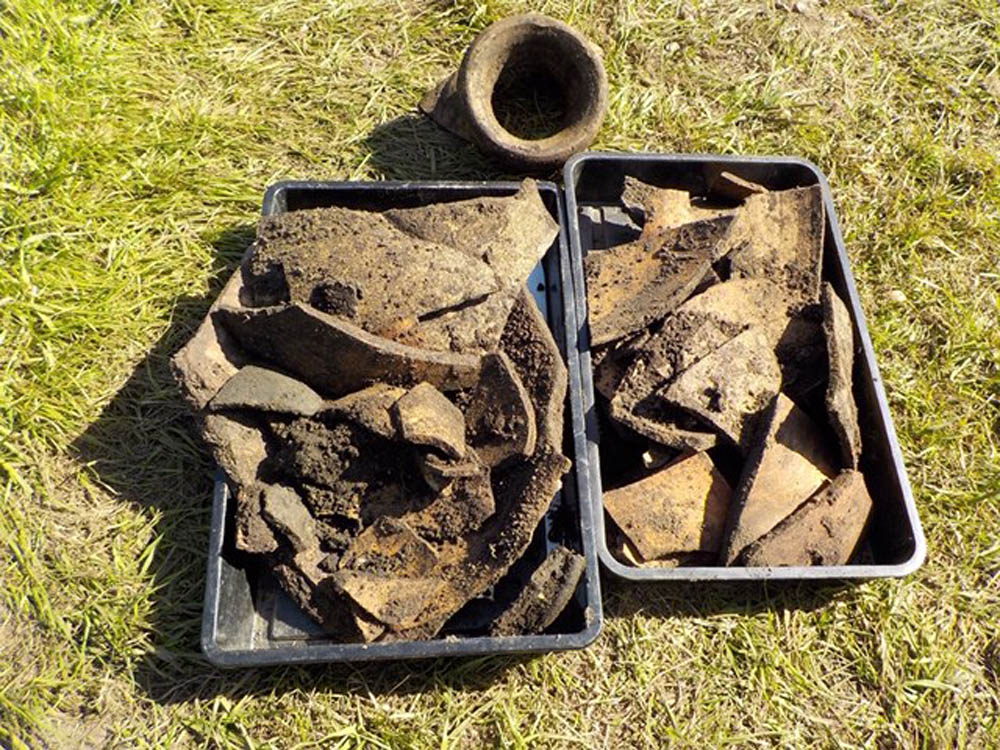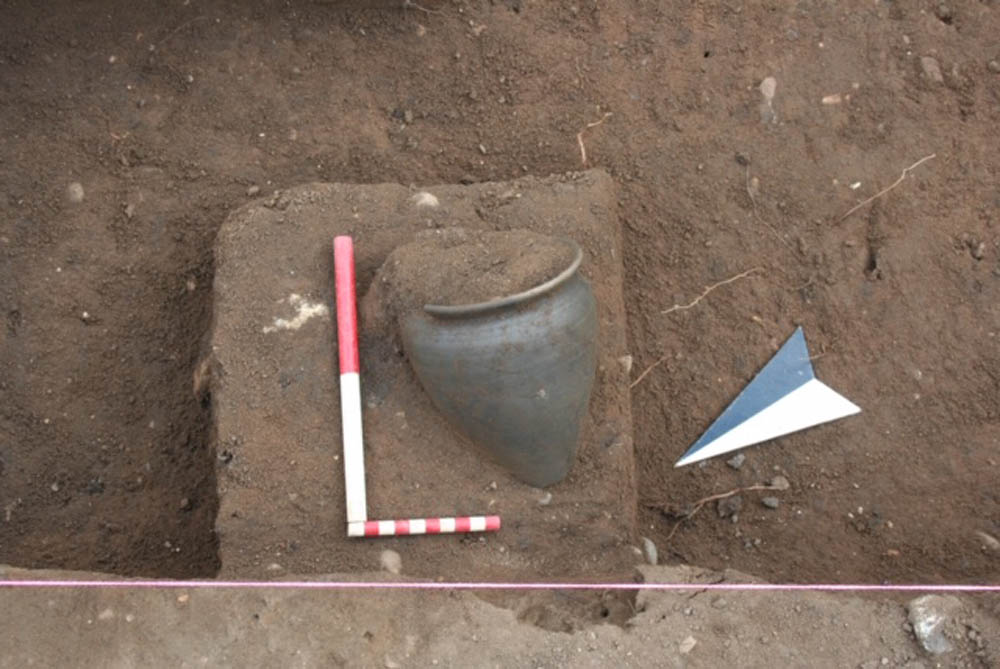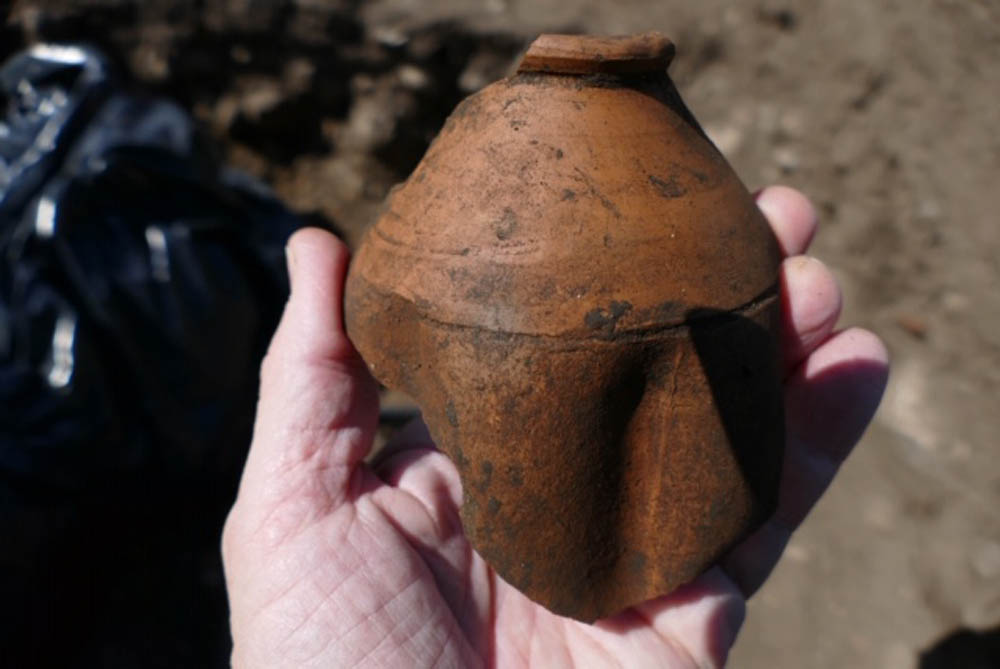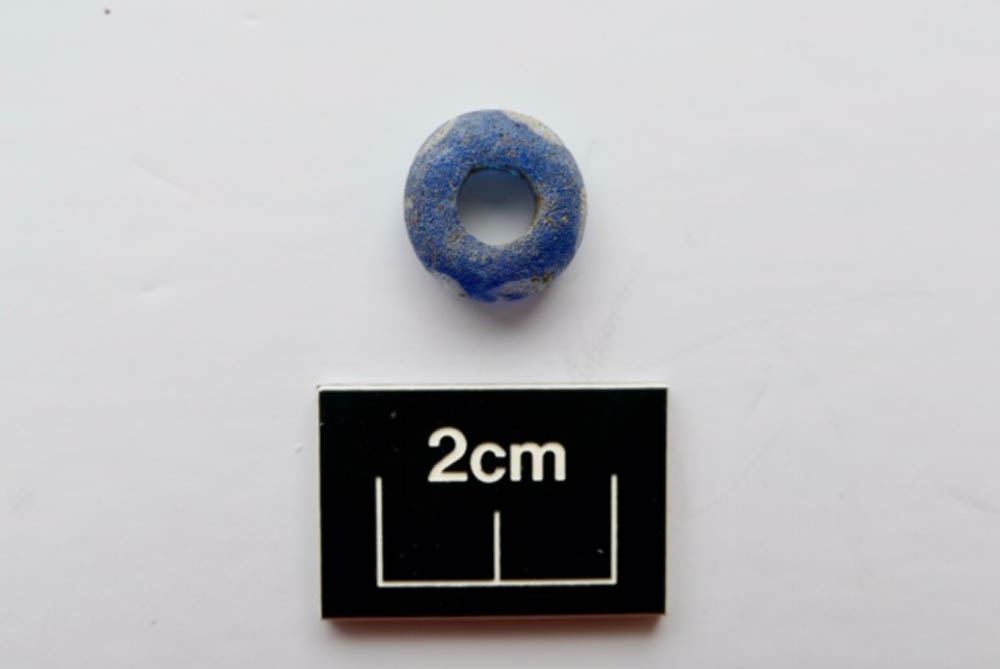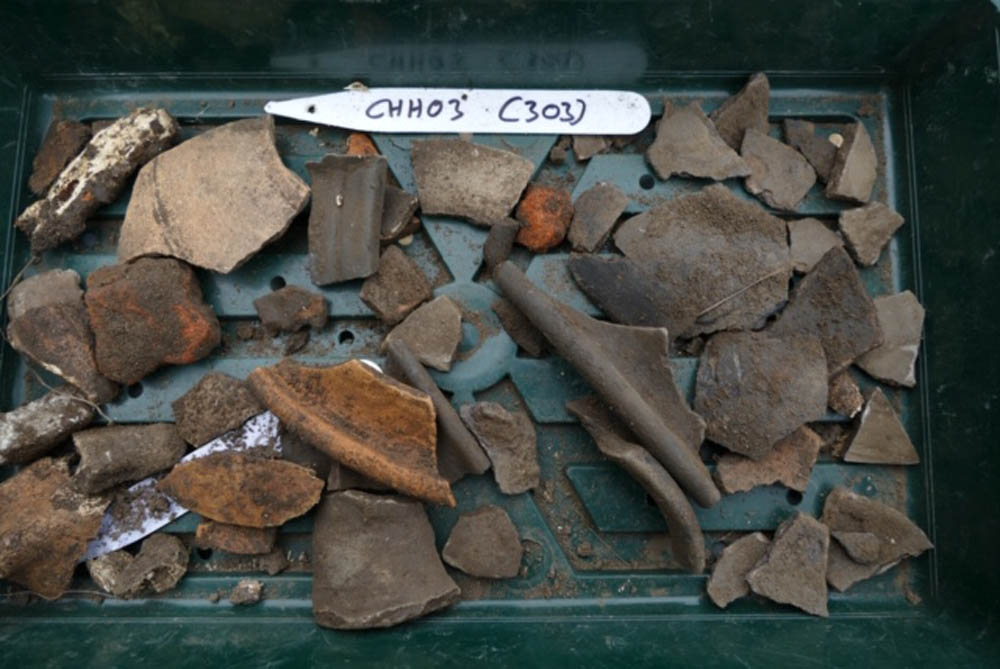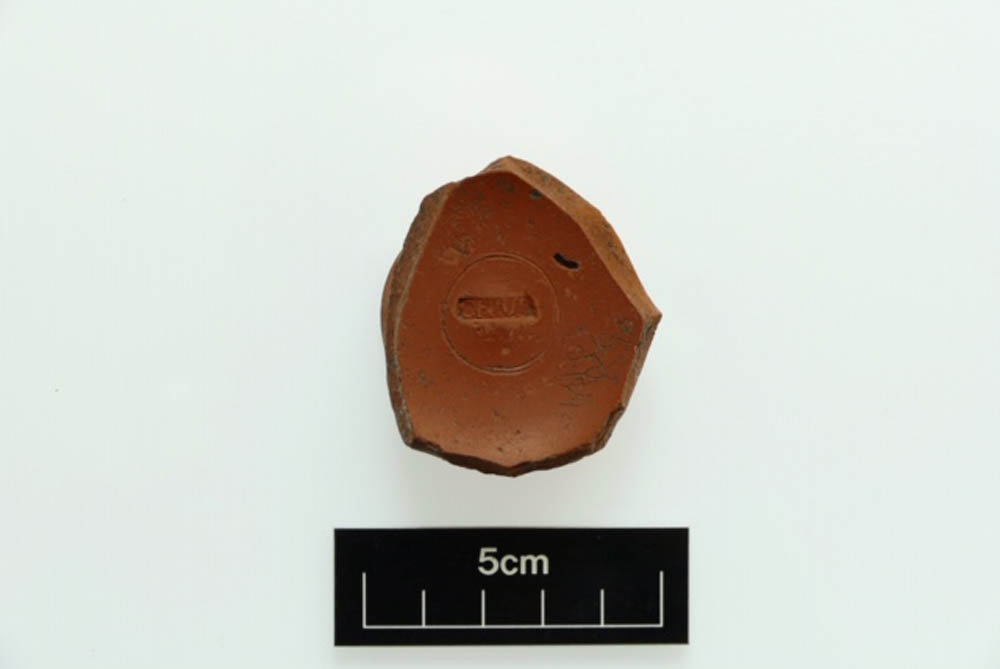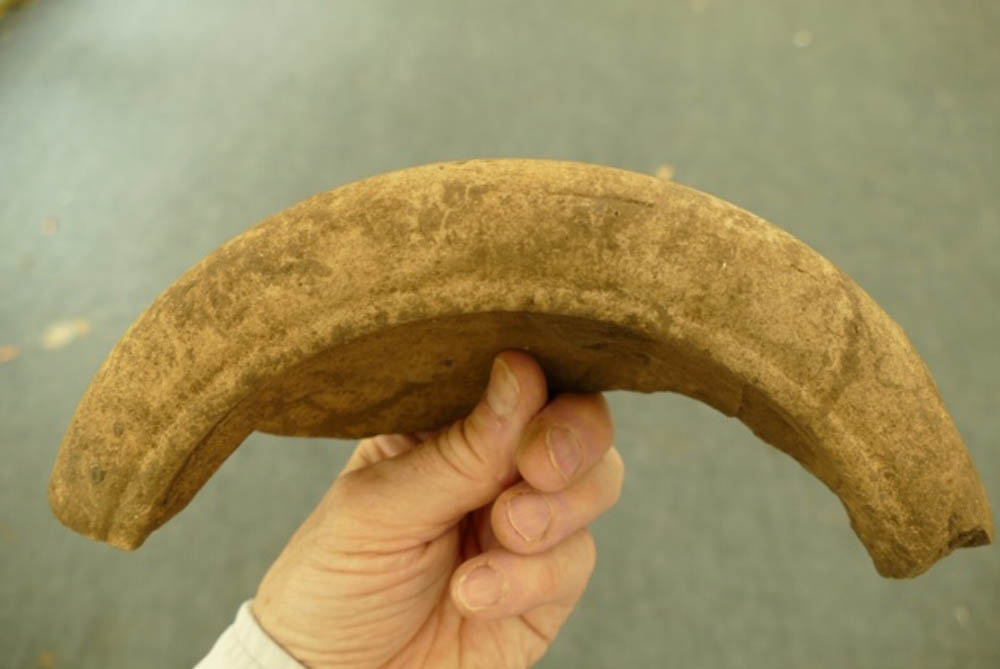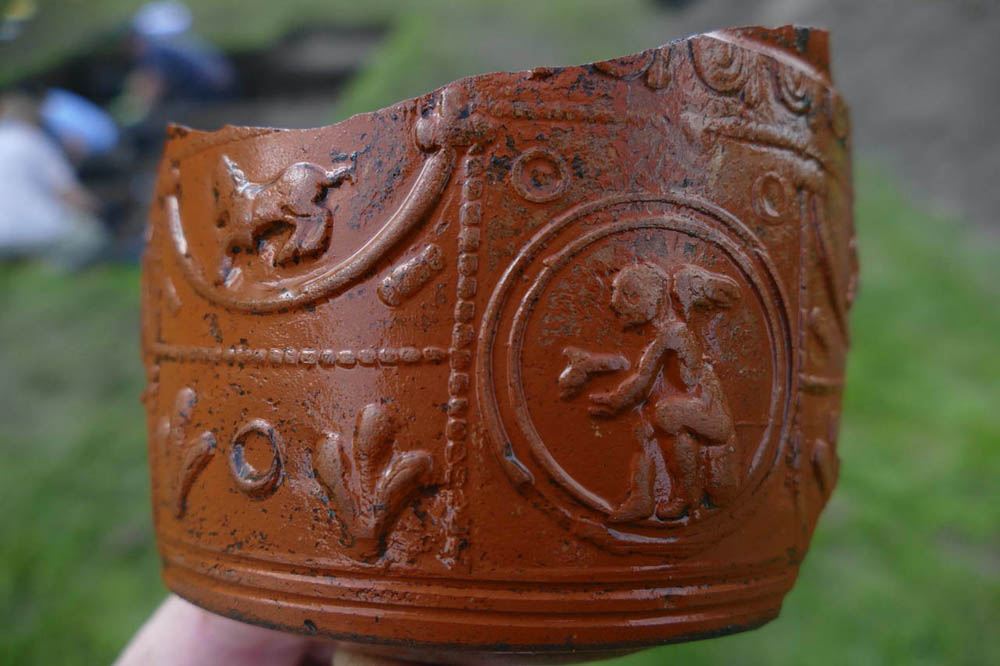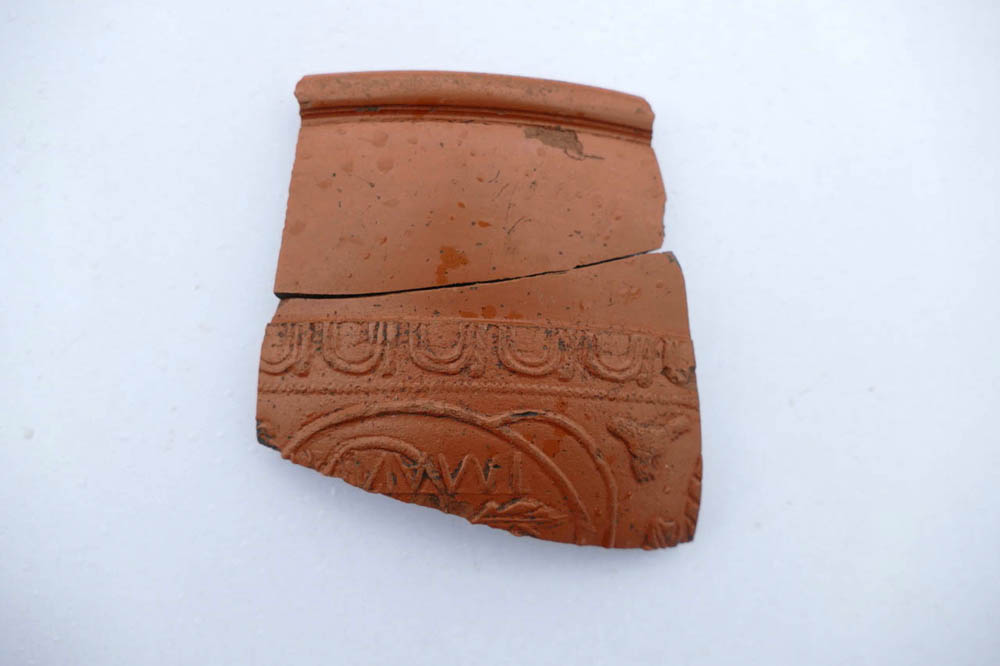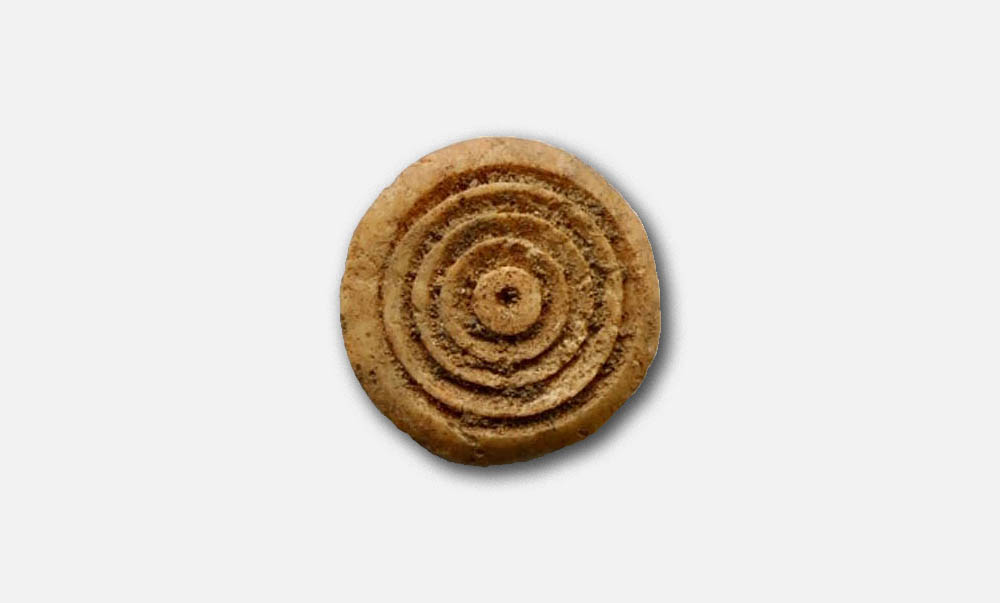What we do
Working in partnership with the University of Nottingham since 2007, Caistor Roman Project and its members have been involved with excavations and surveys in and around the Roman town of Venta Icenorum, with the aim of investigating the origins and development of the town throughout the period of Roman occupation
We are also increasingly examining how the focus of occupation appears to have shifted to the wider hinterland during the Post-Roman period in the form of dispersed Anglo-Saxon settlements and what happened to this important site with the rise of Norwich to pre-eminence from the 10th and 11th centuries.
Research
Our background research is the starting point for any archaeological intervention whether it is non-invasive investigation in the form of Geophysics or invasive in the shape of trench excavations.
At Caistor Roman Project this can entail any or all of the following:
- A search of records held by the Norfolk Record Office (NRO).
- A formal search of the Norfolk Historic Environment Record (NHER).
- A review of old maps and aerial photographs.
- A search of newspaper archives e.g. Eastern Daily Press.
- A review of the National Mapping Programme (NMP) data relevant to the location under study.
- A review of relevant literature including site reports published either formally, such as the East Anglian Archaeology series or informally as grey literature.
- A review of any past archaeological activity in the area under study.
- A review of information gleaned from past archaeological activity such as field walking or test pitting.
- A review of Museum Accession Records.
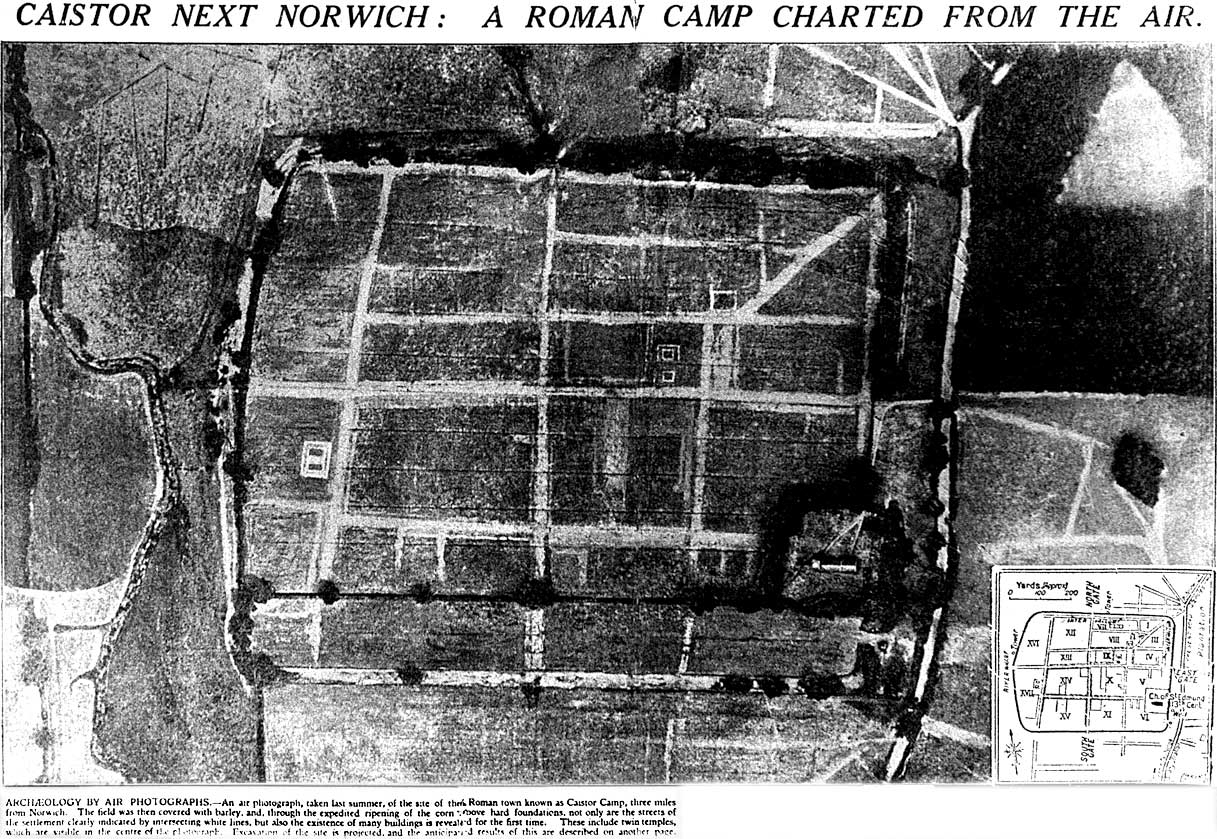
Much of this research is conducted as a desktop study but where this is not possible visits are made, for example, to the NRO and the NHER offices. The completion of a detailed background study allows any subsequent investigation plans to be formulated on the basis of sound research questions. This is particularly important in the context of excavation where the underlying archaeological features may have lain undisturbed for thousands of years.

Over the past decade Caistor Roman Project have also carried out extensive non-invasive geophysical and ground penetrating radar studies across much of the area in and around the Roman town itself.


This builds up a comprehensive picture that provides vital information to shape our strategic planning.


Excavation
We generally carry out two excavation seasons per year – at Easter and in August – although the Covid19 regulations have restricted us recently. Working in partnership with the University of Nottingham since 2007, CRP members have been involved with excavations and surveys in and around the Roman town of Venta Icenorum.
Our excavations are carried out and managed primarily by our members, many of whom have been trained through their membership, supported by local professionals and students from the Universities and Nottingham and East Anglia.
In the future, we will welcome volunteers from the Operation Nightingale, a project that gives injured ex-servicemen and women the chance to participate in archaeological work, as often featured on the BBC “Digging for Britain” series.
Further Information about this work, including interim reports, blogs and links to videos can be found on the Resources page and blogs section.
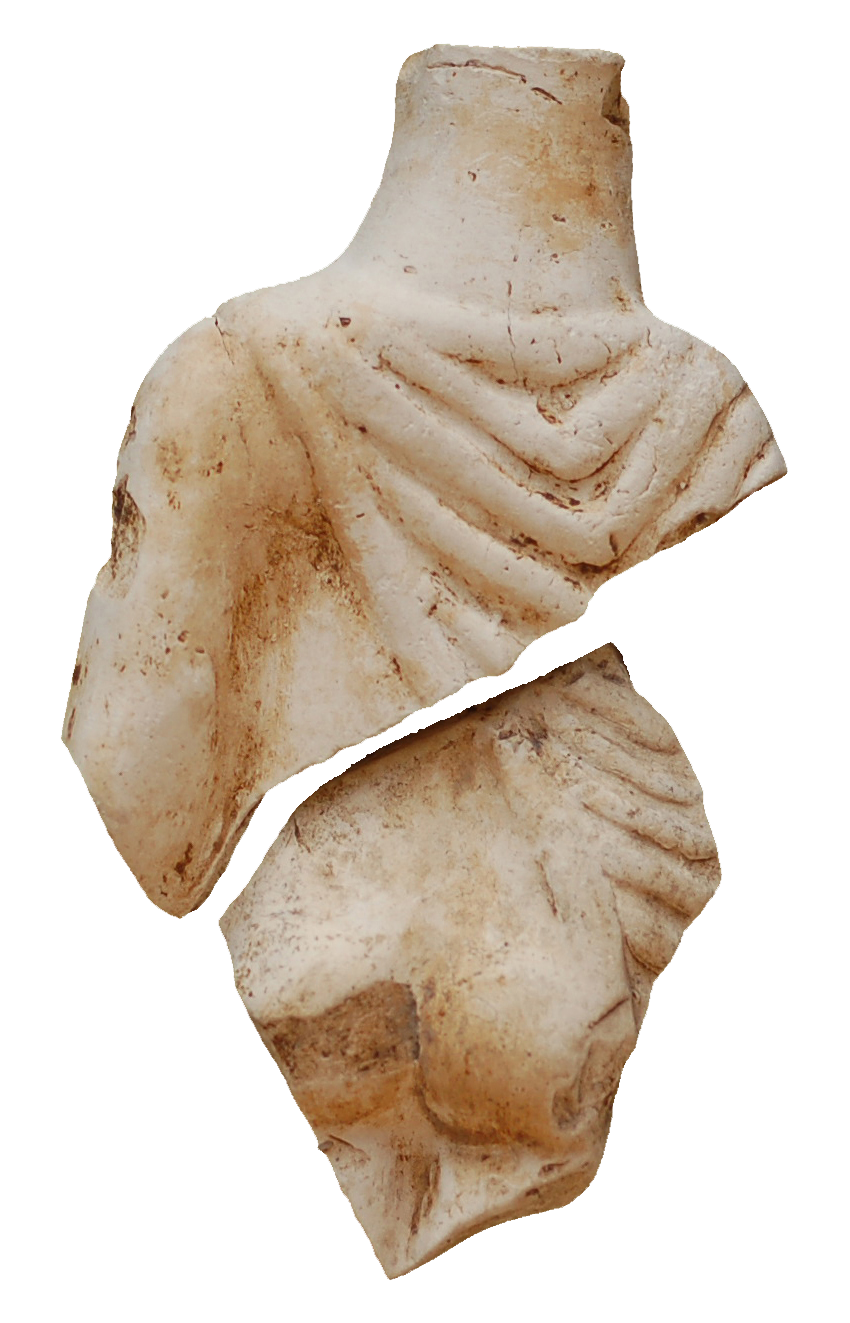
Excavations and surveys
The Roman town
From 2007 until 2012, CRP was involved in research within the walled area of Venta Icenorum, including major seasons of excavation from 2009-2012. See the dig blogs to see what we found. As well as the project’s academic publications, a useful summary can also be found in this article from Current Archaeology magazine.

Test-pitting and surveys
Caistor St. Edmund village
During 2014 and 2015, CRP members investigated the extra-mural area of the Roman town that lies in the area of the present village. In particular we have been looking at the area that lies within the triple-ditch enclosure that surrounds the Roman town.
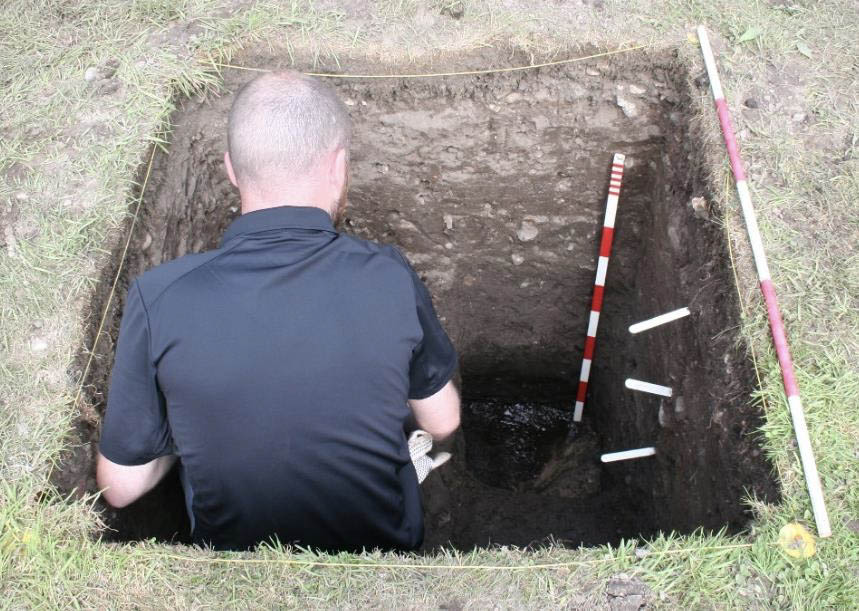
This work, supported by the Heritage Lottery Fund, the Foyle Foundation, the John Jarrold Trust and the Norfolk and Norwich Archaeological Society (NNAS), gave us important new information about the suburbs of the Roman town. An interim report on the 2015 work can be found here.
Temple Field 2018 & 2019
To the northeast of the Roman Town – lie the remains of a ‘Romano-Celtic’ temple site. Temple Field has for some time been known to contain the remains of a Romano-British Temple and a large villa-like ancillary building both surrounded by a terminus. Work in 1950 had discovered evidence of a monumental gateway underneath modern housing and a 1958 excavation had identified part of the temple building.

The 2018 excavations focused on clarifying the chronology and use of the complex by targeting the ancillary building, the potential eastern gateway and enclosure ditch. The ancillary building comprising several phases, with tessellated floor still partly in situ, evidence of Roman enclosure ditches, a later timber structure, and a metalled roadway.
In 2019 the focus turned to the Temple building itself. One trench explored the northwest corner of the ambulatory, the paved walkway enclosing the central shrine or cella, and a series of pits. A second trench, over the eastern part of the temple, revealed three walls just below the ploughsoil – relating to the internal cella, the ambulatory and an external portico. At least 2 phases of building were discovered an earlier, smaller temple with the later phase appearing to be one of the largest of its type in Roman Britain. The third trench revealed an ‘hollow-way’ filled with rubble, tiles, and clusters of loose tesserae from the temple building.
Further details on both excavations can be found in the Blog section and in the Interim Reports located in the Resources section.
Wymer Field 2016
In the summer of 2016 we opened up a large (25m) long trench across the triple ditches at Wymer Field. It appears that this ditch complex remained open until the mid-second century AD as evidenced by pottery deposits. The upper layers contained a significant amount of Saxon pottery.
Aerial photo of the Wymer Field trench reproduced by kind permission of Mike Page http://www.mike-page.co.uk
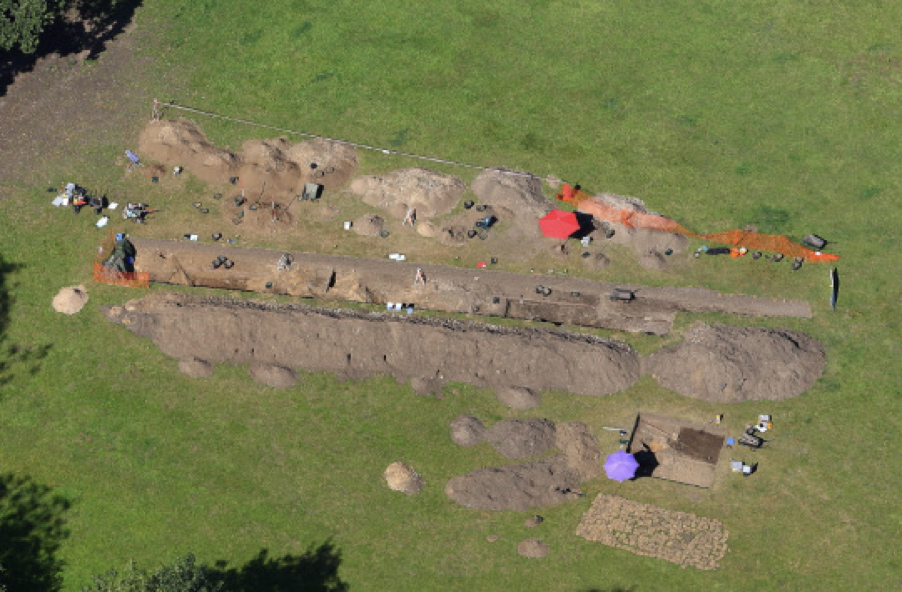
Related work
Fieldwalking
In the Caistor St Edmund area
Over the years the Caistor Roman Project has carried out several structured field walking exercises in areas around the Roman town centre.
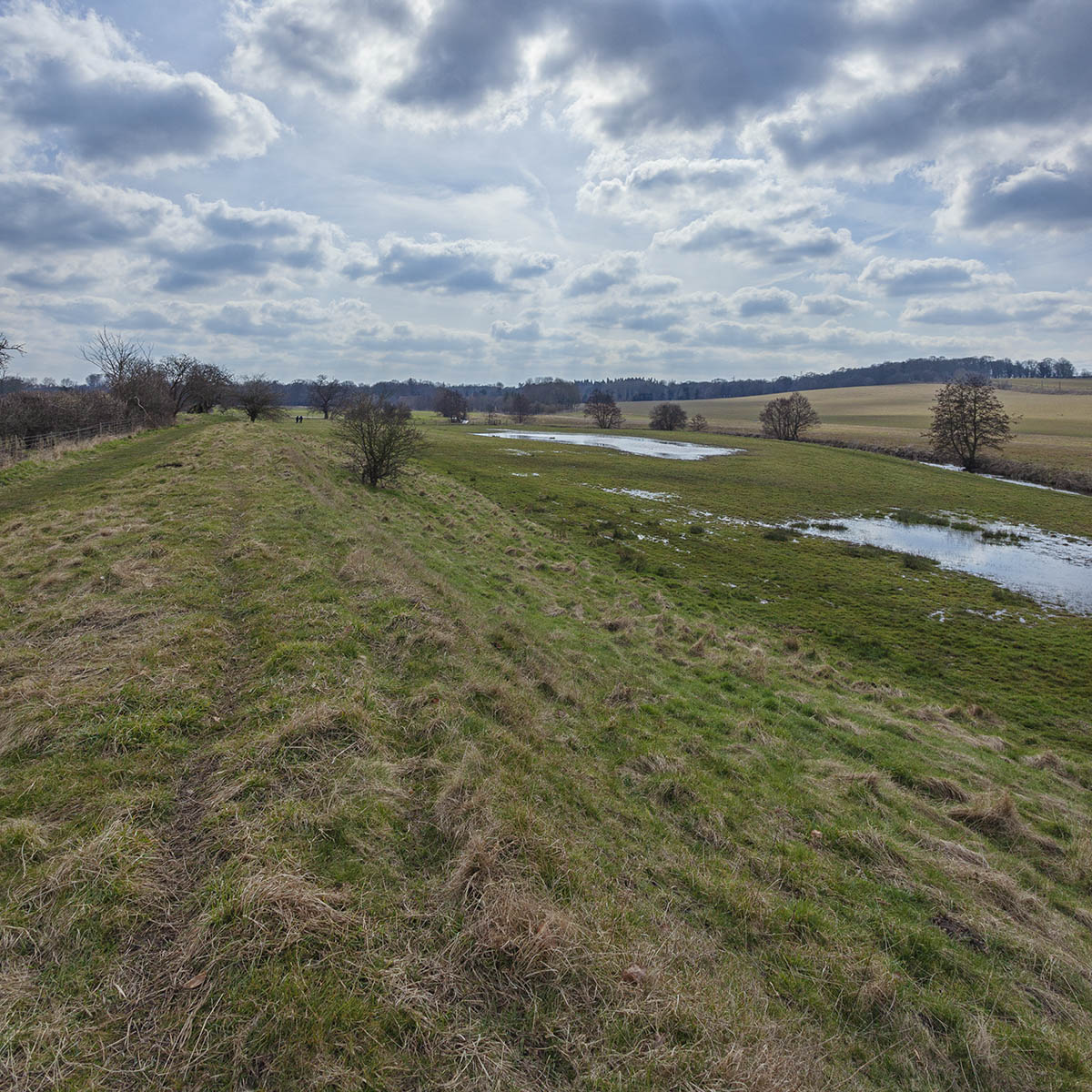
Conferences
“A town of the Iceni” conference
In January 2017, CRP organised a one-day conference with the University of Nottingham and the UEA (University of East Anglia). Sponsored by the British Academy, the conference brought together specialists and archaeologists working on the Roman town to summarise results to date.

Abstracts from the day can be found here. Copies of the displays used at the conference can also be accessed including a timeline for the development of the town and more information on the work of the volunteers.
Archives
On the site and the village
As part of our recent Heritage Lottery Fund project, our members carried out archive research relating to the site and the village itself.
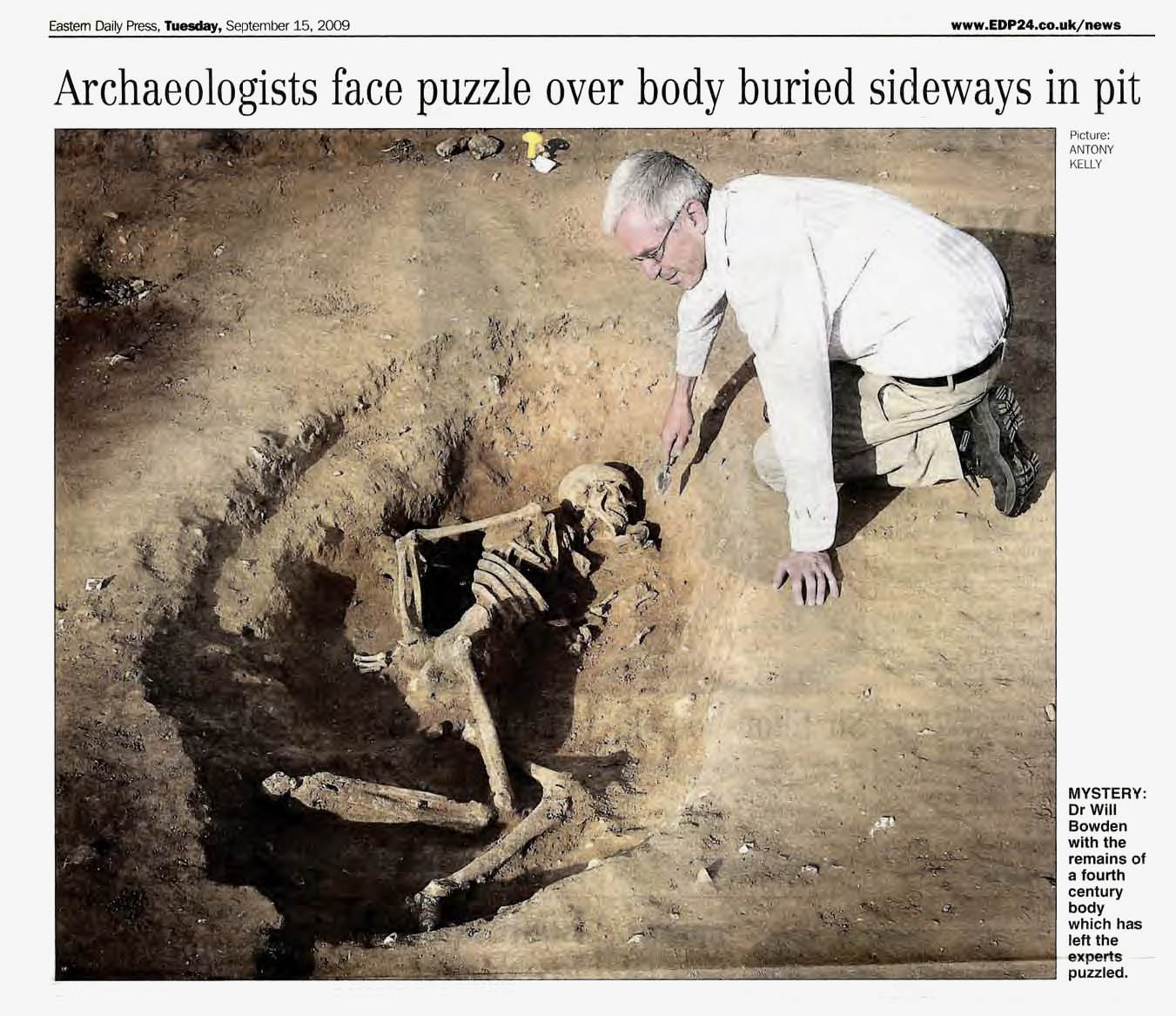
For an excellent collection of newspaper cuttings relating to the history of Caistor in the 20th century, Click here.
Post-excavation
After an excavation has been completed on the ground the work for our members continues with the processing of all of the bulk finds through to report writing and eventual publication.
Everything that comes out of the ground will have been stored in labelled trays for each specific area of each trench before leaving the site and being transported to our barn.
Our barn, at Kirby Bedon, just south of Norwich, is where the finds are initially cleaned, washed where appropriate, and then counted, weighed and catalogued prior to going to the person who will write each finds report.

We generally run sessions at the barn twice a week throughout the year (except the winter) to work on the finds from the previous excavation and prepare for the next one.
The sessions at the barn are sociable activities to which many members attend, generally with coffee and cake, and where a good time is almost guaranteed.
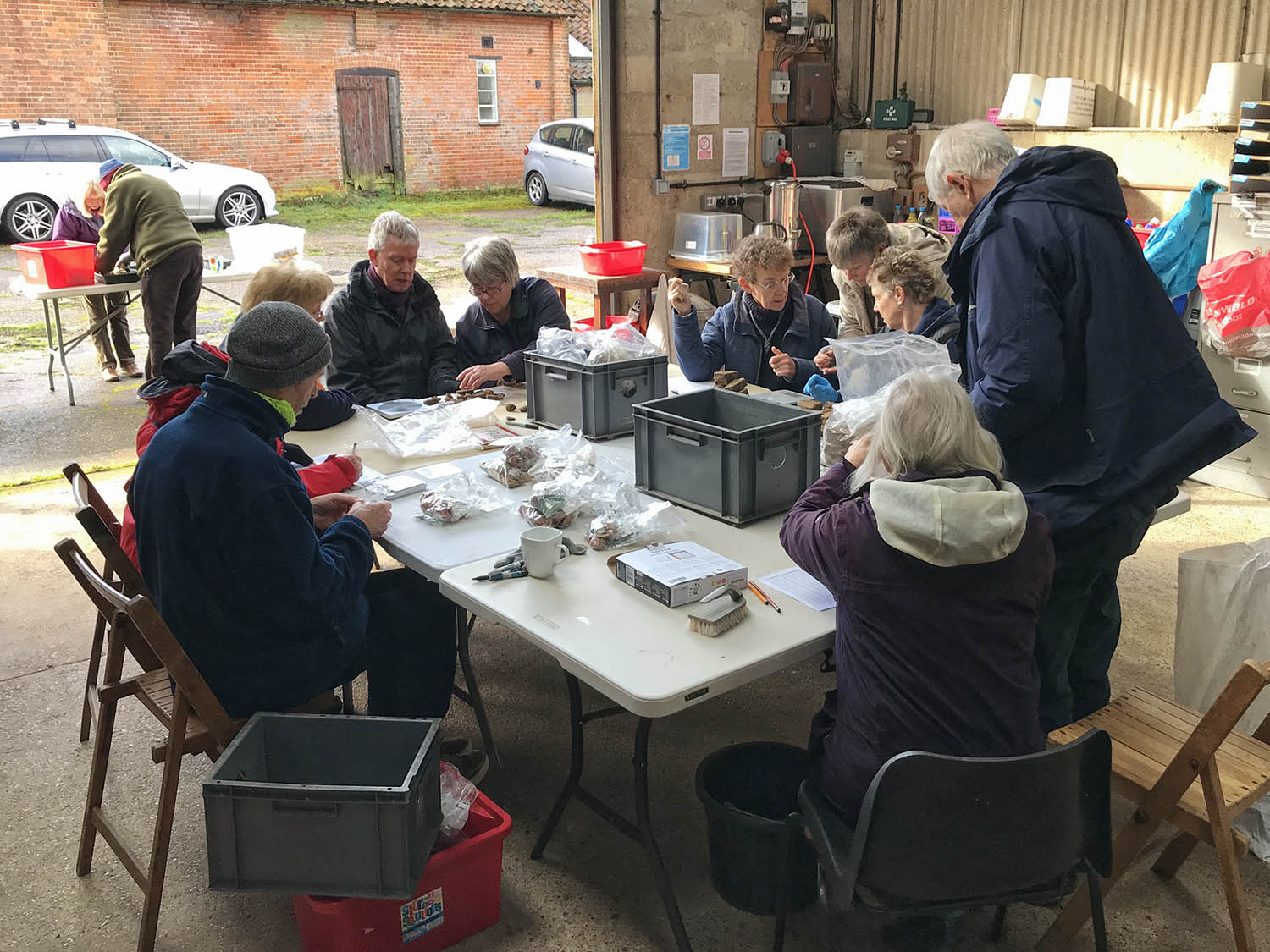
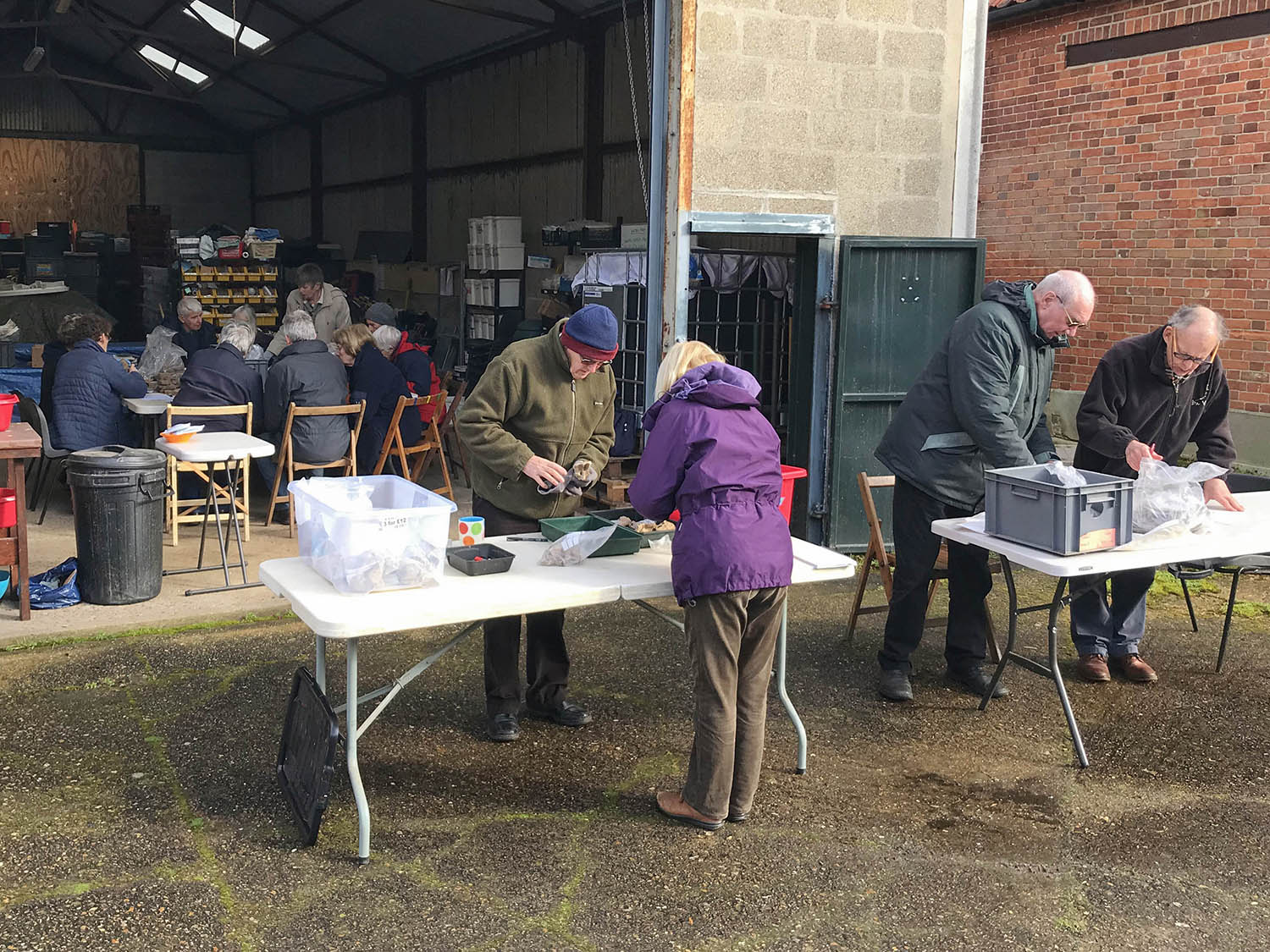
Archaeologists are required by law to prepare and publish detailed reports on their excavations and finds. We typically write reports for:
- Pottery (pre-Roman, Roman & past-Roman)
- Glass
- Metalwork & metalworking deposits
- Ceramic Building Material (CBM)
- Tesserae
- Animal bone
- Flint
- Stone
Once the finds reports are completed the finds themselves are returned to the barn for storage.
Over the years we have also developed reference collections of:
- Ceramic Building Material (CBM)
- Geological samples
- Animal bones
- Pottery
Small finds which are typically small in number but rich in information, are processed, stored and reported separately.
Environmental/soil samples are collected from excavations and passed to an expert who processes the samples via flotation tanks and develops reports which are then incorporated into the overall excavation analysis and reporting.
At the barn we also carry out training and educational sessions for members.

Active projects
Study areas
As of Autumn 2020 ongoing research and study of the area continues to the north and east of the walled town including the grounds of Caistor Hall Hotel, Burnthouse Farm and Friston Field. This involves geophysical surveys undertaken by Dr. Dave Bescoby supported by members of the Project followed by targeted evaluations by mean of trial trenching and also ground penetrating radar surveys of the town site.
Tas Valley Project
To better understand Caistor St Edmund, we need to be able to try and interpret it in the context of the Tas Valley area as a whole. The town sits in an area rich in prehistoric remains and must have been important to humans from long before the Romans arrived and over the centuries since then. As well as historical research our field group surveys local properties and the rural landscape.
We have a clear methodology based on best practices from BAJR and Historic England which we are refining to meet the evolving needs of our research. Our aim is also to validate the oral and written histories of a particular parish using an archaeological approach.
Desk based assessments and research
Desk based research of the Anglo-Saxon cemetery in Park field including a review of the Accession Records held by the Norfolk Museum Service with a view to conducting a re-examination of the material assemblages as and when this becomes feasible.
This would include the cremation urns held in the Museum collection. It is also hoped to establish whether or not any human skeletal remains from Surgeon Commander Mann’s excavation of the cemetery have been retained and if so whether or not samples could be made available for laboratory analysis using modern analytical techniques.
Post Excavation and Reporting
Work is underway to process the finds and prepare the reports following the recent summer excavation and on completing the reports from previous excavations that yet to be published.
Access limitations
Access to further details on these and other ongoing/active projects is restricted to members working on those projects.
- Temple Field
- Wymer Field
- Caistor Town
- Village Test Pits
- Old Hall Test Pits
- Caistor Hall Hotel Paddock
For members, access to these work areas is password protected. Please contact CRP email if you require help in accessing these areas.
Education & Outreach
A number of CRP members are involved in our education and outreach programmes. We offer a selection of on-site and in-school activities, mainly aimed to support the KS2 History unit: The Roman Empire and its impact on Britain. Visits to heritage sites are often the events that children most remember about their school experience and CRP members can really make a difference by helping to provide stimulating and well-organised visits which can inspire life-long interests in history and archaeology.
We also offer free weekly tours of the town from Easter to the end of September to the public and welcome adult interest groups such as U3A, WI and The Battlefields Trust for more specialised and tailored tours.
What we do
CRP, in partnership with the Norfolk Archaeological Trust, offer two main education packages, largely aimed at KS2 to support and enrich the study of the Roman Empire and its impact on Britain. One involves a visit to the site of Venta and we also visit schools and conduct a range of activities for pupils. All our resources and activities make use of evidence found at Caistor.
Site Visit
We operate a carousel of activities which are run by our trained volunteers:
- A physical timeline back to the Roman period, to help set the context.
- A noisy, interactive activity, using primary sources to recreate the atmosphere in a Roman bath house, such as the known to exist at Caistor
- Measuring out the Forum, using a Roman groma (surveying instrument) and role play about the business that was carried out
- Who, what, where, when? Targeted questions and comparisons between life in Roman Caistor and the present day.
- Discovering Roman Venta using the Caistor App on smartphones.
In-school activities
Again, these run as a carousel of sessions allowing pupils to touch, describe and make inferences about real and imagined finds from our excavations.
- Marcus and Aurelia: Identifying domestic Roman objects that have been found at Caistor and working out how and where a family might have used them.
- Ancient and modern -a matching activity comparing modern items with their Roman equivalents.
- Working as an archaeologist -reconstructing pots; finding and handling objects buried in a sandpit.
- Food -exploring what sort of foods might have been included in a ‘Roman’ diet and designing a meal.
All our activities use open-ended questions, allowing pupils to think and describe, use verbal reasoning and problem-solving skills. In normal circumstances the Education and Outreach teams receive regular updates and training workshops. Activities are reviewed and individual members are encouraged to develop their own techniques to suit their preferred style of delivery.
Our visit to Caistor and having the team coming into our school brought an extra dimension to our Roman unit. The team were knowledgeable, friendly and entertaining and the activities stimulated great discussions among our pupils, thank you.
Tours
Our regular Sunday tours of Caistor Roman Town have become increasingly popular and in 2019 we were able to offer mid-week tours throughout July and August as well. We also welcomed large numbers of visitors to our Excavation Open Days and special family orientated events for Heritage Open Days. We have a group of fully trained CRP members who conduct tours and help with special activities. Full training is provided and new guides are encouraged to accompany more seasoned members to gain knowledge and confidence.
Unfortunately, due to Covid concerns, Norfolk Archaeological Trust decided not to run tours this year, but we hope to be operational again in 2021. Similarly, our schools’ activities are currently on hold.
My favourite part was finding the lost pottery, because it was fascinating how long it had lasted in the earth.
I don’t think I would have eaten much in Roman times.
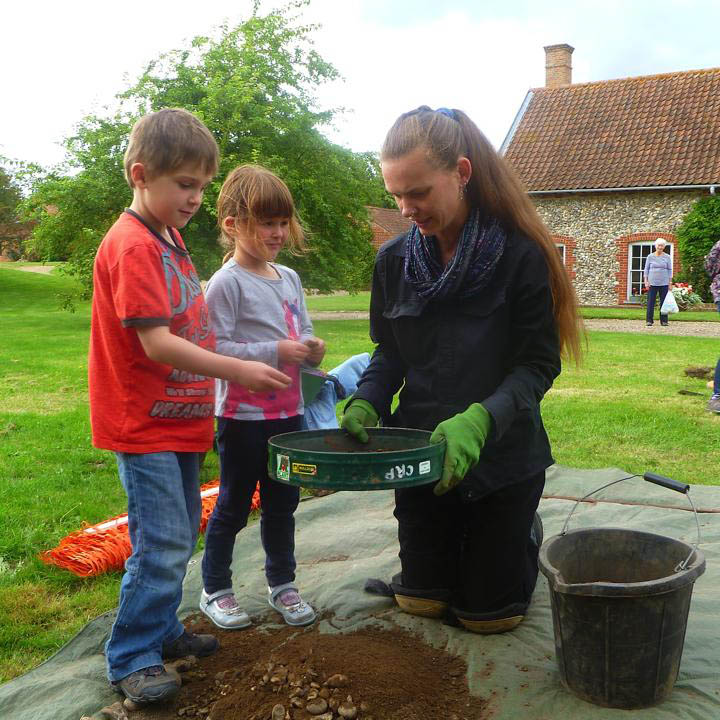
Roman bath houses were very noisy, and they ate pies in the bath.
Thank you Roman Caistor archaeologists for telling us to look for stuff from the past and we all enjoyed it and had fun.
Finds
Small finds that are recovered from excavations or field walking are recorded and processed separately from the bulk finds (pottery, bones, etc.) as they potentially offer more significant information – particularly with regards to dating the environment where they were discovered.
The finds are extensively researched and the Small Finds Reports are key features of our overall excavation reports.
Small finds that are of potential monetary value are generally not retained by CRP – they are other returned to the owner of the land where they were recovered or passed to the Norfolk Museum Service.
The panel to the right shows a small sample of recent small finds.

